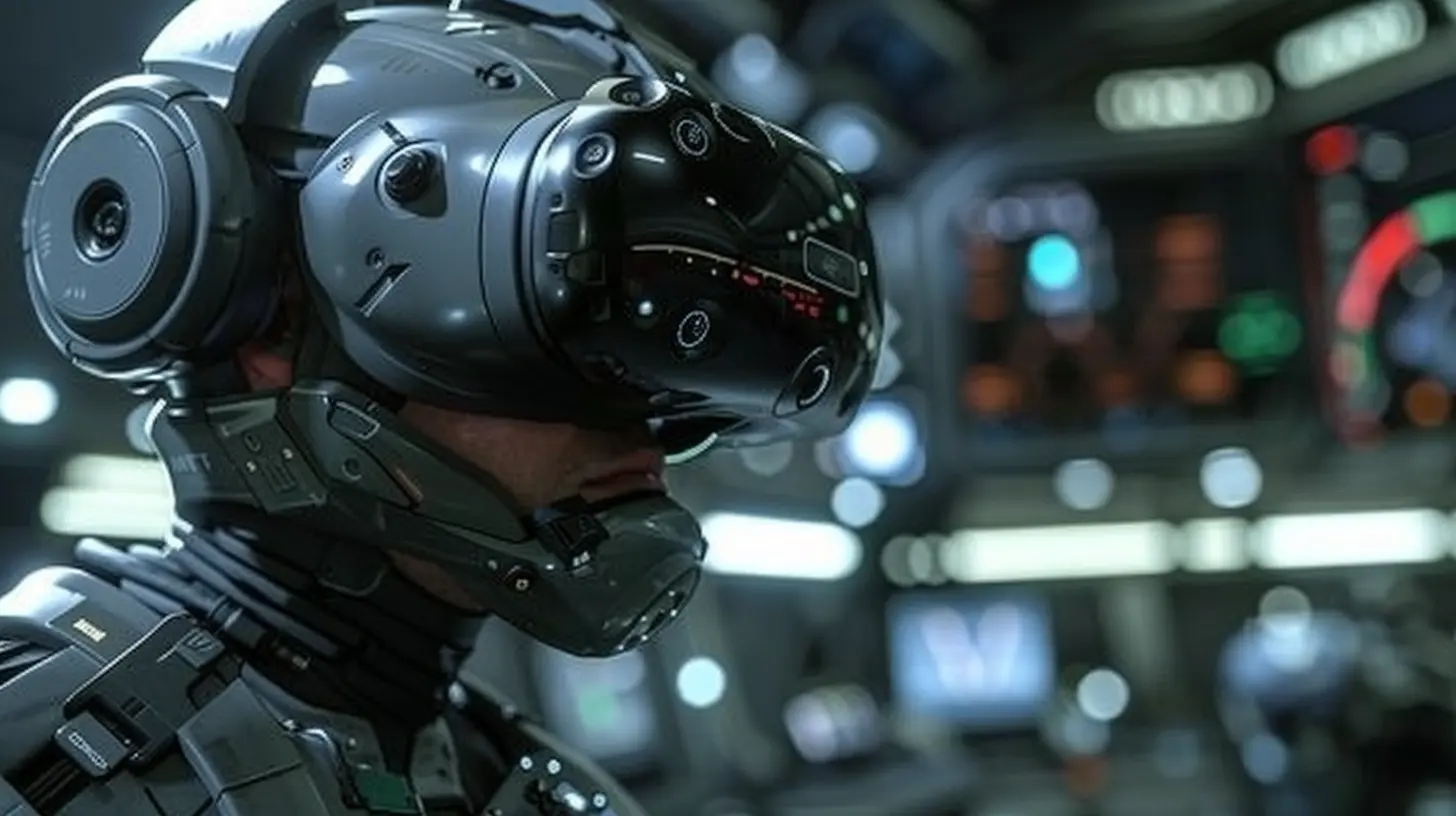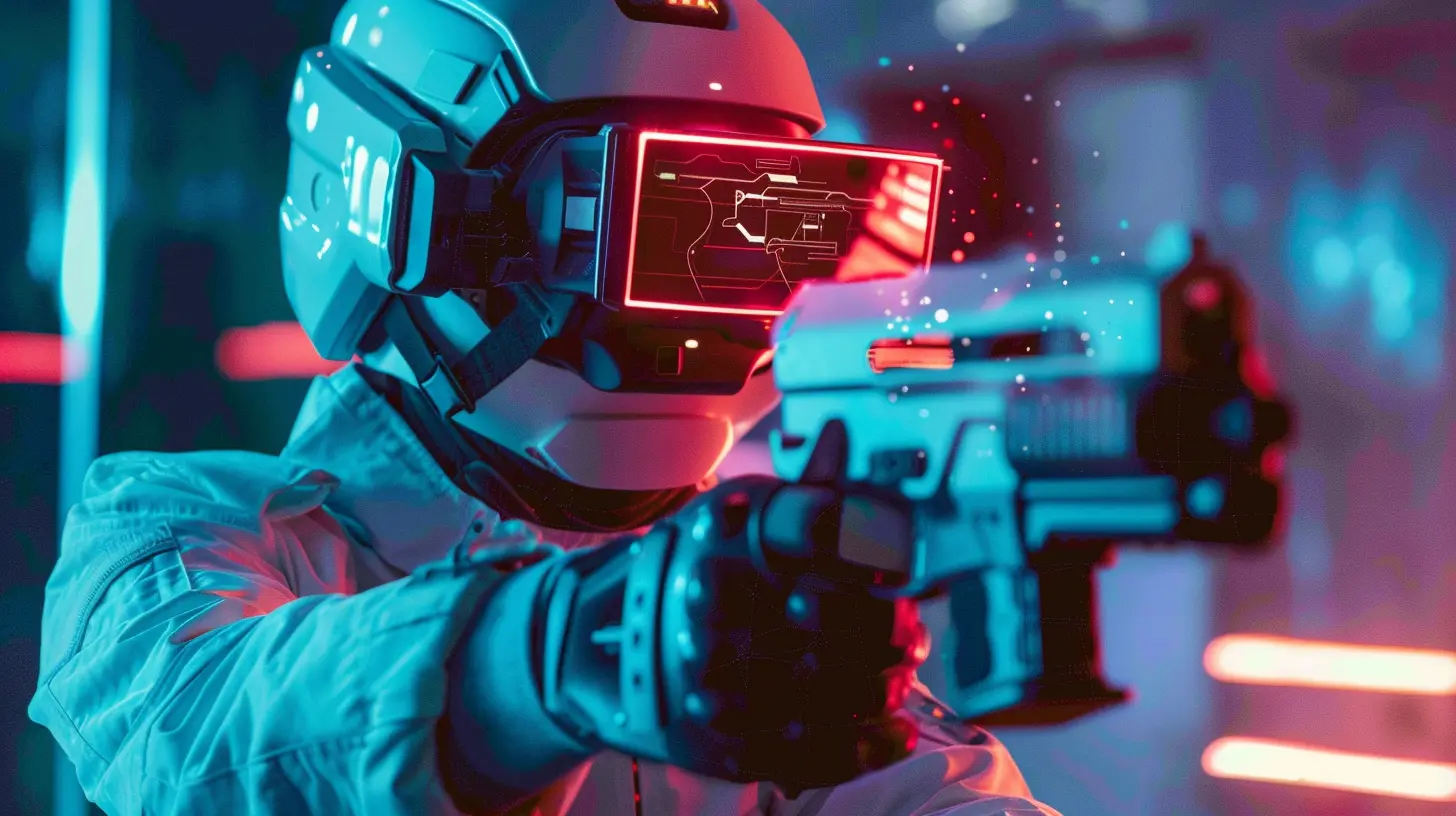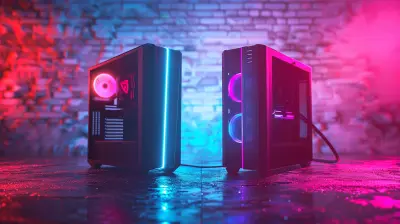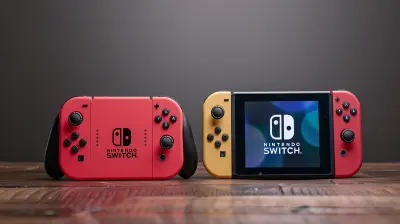The Impact of VR on the Future of FPS Gaming
11 August 2025
The gaming world’s evolving fast—like, really fast. One moment we’re cozying up with the latest console or upgrading to a maxed-out GPU, and the next, we’ve got a VR headset strapped to our faces, ducking virtual bullets like we’re in The Matrix. But here’s the question that keeps echoing through the halls of gaming forums and developer meetings alike: What kind of future does virtual reality hold for first-person shooters?
Let’s be real. FPS games have always been at the cutting edge of tech. From early pixelated shootouts in Wolfenstein 3D to the hyper-realism of Call of Duty: Modern Warfare—shooters push boundaries. Now, with VR entering the fray, we’re not just pushing limits; we’re rewriting gaming altogether.

A Quick Dive Into How Far We’ve Come
Before diving into what’s next, it’s worth looking back. Traditional FPS games rely heavily on keyboard-and-mouse or controller mechanics. Precision aiming, twitch reflexes, and strategic movement dominate the gameplay. But there’s always been a wall—a screen that separates you from the combat.With VR, that wall is gone.
Gone are the days of controlling a character. In VR, you become the character. You physically peek around corners, reload with your hands, and duck for real when bullets start flying. It’s immersive in a way traditional gaming just can’t replicate.

Why VR and FPS Are a Match Made in Gaming Heaven
Let’s be honest—if there’s any genre built for VR, it’s FPS. Why? Because the first-person perspective is already about putting you right in the action. VR just makes that literal.Imagine this: You’re in a post-apocalyptic wasteland. You’re holding a makeshift rifle (your controller), scanning the environment for enemies. But instead of pressing a button to take cover, you drop to your knees behind a rusted-out car. You reload by physically reaching back for a mag and sliding it in. That’s not just playing. That’s living the game.
VR offers:
- Full-body immersion – It's no longer just your thumbs playing.
- Natural movement – Walking, leaning, aiming—it all feels instinctive.
- Heightened engagement – With your body in control, your brain’s 100% in the game.
FPS titles like _Half-Life: Alyx_ have already shown us the tip of the iceberg. The sense of presence, tension, and control it delivers? Off the charts.

The Game-Changing Advantages of VR for FPS Titles
Let’s break down exactly what VR brings to the table for shooter fans.1. Total Immersion
It’s the buzzword everyone throws around, but in VR, immersion isn’t just hype—it’s the real deal. Instead of watching the battlefield, you’re in it. The tension of reloading while enemies advance? The nerve-wracking feeling of hearing footsteps behind you, not from a speaker, but spatial audio? That's next-level intensity.2. Enhanced Tactical Gameplay
Movement’s not just WASD anymore. You want to peek around a corner without giving away your whole body? Do it—literally. Want to lay prone behind a rock for a sniper shot? Go for it. Tactics in a VR FPS are more physical and require real-world strategy.3. Skill Mastery Is Redefined
Traditional FPS games reward twitch reflexes and map knowledge. VR adds another layer: physical coordination. Reloading under pressure, steadying your shot, reacting with your whole body—those who thrive in VR shooters have to develop a new set of skills entirely.4. Revolutionary Multiplayer Interaction
Multiplayer in VR isn’t like talking over a headset. It's full-on interaction. You can wave to teammates, use gestures, or even intimidate opponents (yes, that’s a thing). This creates a much more human, social layer in online FPS titles—something flat-screen games just can’t replicate.
The Challenges Holding VR FPS Back (For Now)
Okay, we’ve hyped up the good stuff—but let’s not ignore the elephant in the room. VR FPS isn’t perfect, and it’s got a few hurdles to clear before it becomes the mainstream standard.1. Motion Sickness is Still a Thing
Everyone loves VR—until the nausea kicks in. Fast-paced movement combined with a disconnect between your eyes and your inner ear can leave players dizzy or even throwing up. Not exactly a selling point.Developers are actively working on this, using techniques like teleportation movement and FOV limitations. But for now, it’s a barrier for many players.
2. Cost and Accessibility
Let’s be real—decent VR gear isn’t cheap. A high-end headset and a capable PC can set you back big bucks. Although standalone gear like the Meta Quest series is making strides, the price tag remains a big entry barrier.Plus, not everyone has the space to swing around like a VR ninja without knocking over furniture or family members.
3. Complex Controls and Learning Curve
VR FPS games can feel a bit overwhelming at first. You’re not just pressing buttons—you’re learning how to move, shoot, and interact in a whole new way. It’s more physical, more demanding, and definitely not as casual-friendly as a traditional controller setup.4. Limited Game Library (But That's Changing)
Although the list of VR FPS games is growing, it’s still pretty limited compared to traditional platforms. There are a few standouts—_Boneworks_, _Half-Life: Alyx_, _Pavlov VR_—but overall, the AAA support is still catching up.That said, indie devs are picking up the slack with some seriously creative VR shooter experiments, and that trend shows no sign of stopping.
Why VR Could Still Dominate FPS Gaming in the Long Run
Despite the challenges, VR is positioned to reshape FPS gaming in a major way. The technology is evolving rapidly. Headsets are getting lighter, cheaper, and more powerful. And as more devs build games with VR in mind—not just as an afterthought—the sky’s the limit.1. The Tech Is Catching Up
We already have wireless VR, eye-tracking, inside-out tracking, and haptic feedback. The next steps? Body tracking, better social integration, and potentially even neural inputs (yes, that’s a thing now). All of this means smoother gameplay and deeper immersion with fewer headaches—literally.2. Metaverse Integration
Like the word or not, the "Metaverse" is gaining traction. And you can bet FPS games will be a key part of these digital worlds. Imagine jumping from a virtual hangout space straight into a battle royale with friends—all in one continuous space. That’s not sci-fi anymore. It’s happening.3. Fitness and Play Merge
Interestingly, VR FPS games aren’t just fun—they’re a workout. You’re squatting, lunging, aiming, shooting—all while on your feet. It adds a whole new layer to gameplay that could appeal to both gamers and fitness enthusiasts. Who needs a treadmill when dodging bullets burns calories?4. The Next Generation Is Growing Up on VR
Kids today are trying VR as one of their first gaming experiences. For them, it's not a novelty—it’s normal. As this generation grows and their spending power increases, so will the demand for VR-first gaming experiences, especially in action-heavy genres like FPS.
What the Future Might Look Like
It’s not just about better headsets. The future of VR FPS could include:- Full-body haptic suits so you feel every hit (don’t worry, not painful—just immersive).
- Treadmills or room-scale environments to enable truly natural movement.
- AI-driven enemies that adapt to your physical play style.
- Cross-platform play between VR and traditional users (this is already starting in some games like _Population: One_).
And maybe—just maybe—we’ll reach the point where you jump into a shooter through brain-computer interfaces. Wild? Maybe. Possible? Absolutely.
Final Thoughts: Should You Jump Into VR FPS Now?
If you’re an FPS fan and you haven’t tried VR yet—you are missing out. Sure, it’s not perfect, and there’s a learning curve, but the experience is so unique it’s hard to go back.VR isn’t just a gimmick or a fad when it comes to shooters. It's a way to breathe new life into a genre that’s been around for decades. It’s giving players new tools, new tactics, and a new perspective—literally.
So, will VR take over all FPS games? Maybe not tomorrow. But five to ten years down the line? Don’t be surprised when your next squad night involves dodging laser blasts in your living room instead of clicking away behind a keyboard.
It’s coming. Lock and load.
all images in this post were generated using AI tools
Category:
First Person ShooterAuthor:

Pascal Jennings
Discussion
rate this article
1 comments
Willow Martinez
VR will redefine FPS gaming—prepare for evolution!
August 29, 2025 at 2:51 AM

Pascal Jennings
Absolutely! VR has the potential to immerse players like never before, transforming gameplay and redefining interaction in FPS games. Exciting times ahead!


